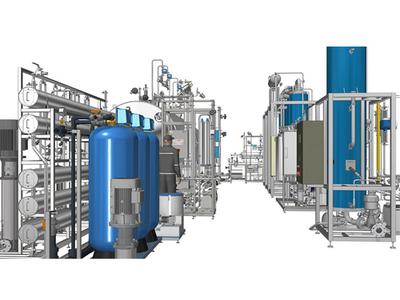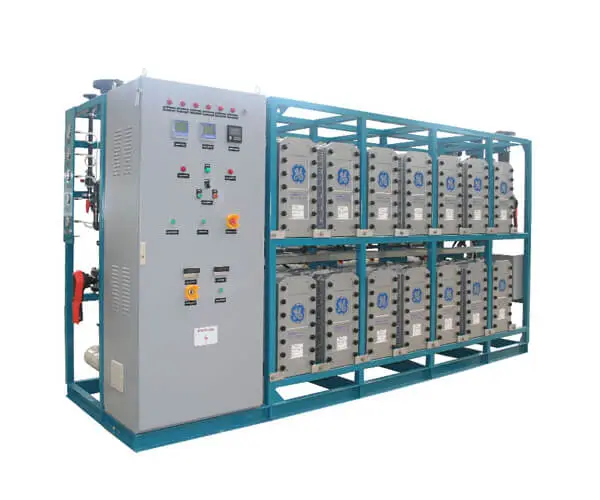Distilled or deionized water is used as the inlet water and paired with the ultra-purification unit.
The water and electricity consumption of a 10L/H machine is very large, and the cost of water and electricity per year is significant. There is also a safety risk of water shortage and explosion despite the financial and manpower investment.
The ion exchange equipment requires a large space for placement due to its large size and the resin needs to be regenerated every week, which is very troublesome.
As technology evolves, the water quality requirements for experiments become higher, and the water quality obtained from distillers and deionization devices cannot meet the increasing demands of water usage.
The inlet water is tap water with reverse osmosis purification unit and ultra-purification unit and partial monitoring.
The purification unit is combined with the ultra-purification unit to make up for previous shortcomings.
A single-stage reverse osmosis is prone to be affected by changes in the source water quality, resulting in unstable water quality. When the source water quality is poor, the loss of the purification unit will be rapid.
The components inside the water dispenser are mostly connected by hoses, and the water and electricity circuits are not separated, which poses many safety hazards. It is not easy to disassemble and clean, and the water circuit content is prone to breed bacteria or biofilm.
There are few water quality monitoring points, and the control system is relatively simple, unable to record data, and unable to realize data inquiry and traceability.
The inlet water is tap water with a complete pre-treatment unit, reverse osmosis unit, ultra-purification unit, and complete water quality monitoring system. All individual units are integrated into one module.
Plug-and-play modular design, convenient consumable replacement, shortened maintenance time, and improved work efficiency.
A two-stage reverse osmosis increases desalination rate and produces stable third-stage water to avoid the problem of rapid exhaustion of purification columns.
The fully intelligent control system monitors the water dispenser's operation and water quality status in real-time at multiple monitoring points, ensuring stable water production.
The water dispenser cloud service can diagnose the water dispenser's operating condition in advance, ensuring continuous and normal operation.
Ultra-pure water is a high-purity water produced by reverse osmosis technology, EDI electrodialysis technology, and other appropriate supercritical precision technologies used to develop ultra-pure materials (semiconductor device materials, nanoceramic materials, etc.). The water's resistivity is greater than 18Mω·cm or close to the limit value of 18.25mω·cm (25℃).
The ultrapure water systems adopt pre-treatment, reverse osmosis device, EDI electrodialysis, resin purification, and post-treatment methods to almost completely remove conductive media in water and to remove non-free colloidal substances, gases, and organics at a low level.


